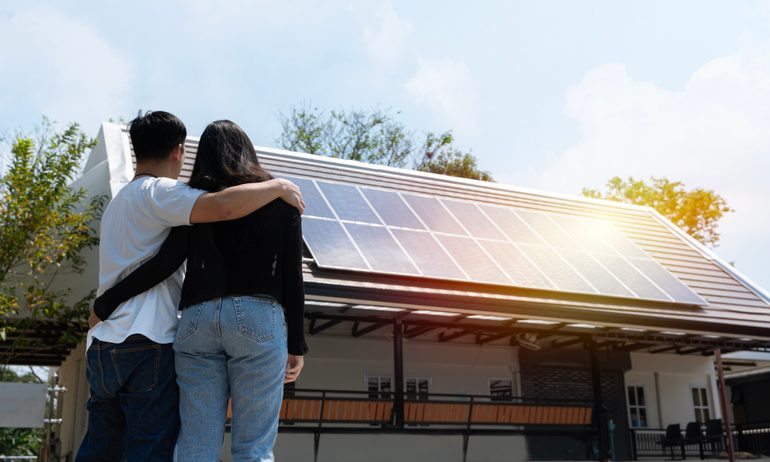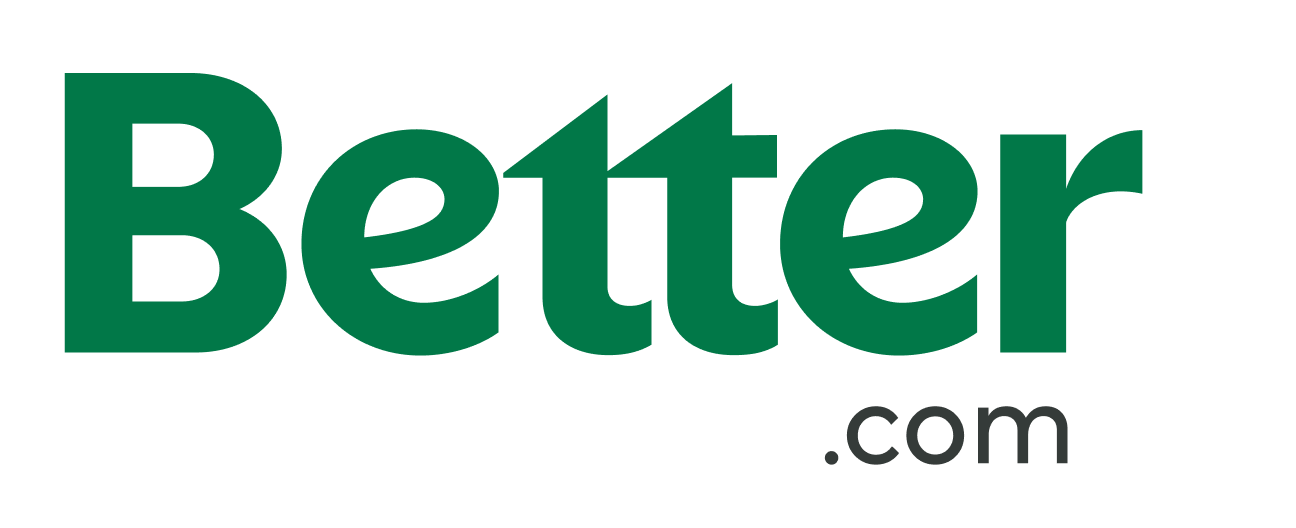Solar Power Purchase Agreement: What to Know in 2024
Solar PPAs can make solar more accessible, but there are some things to know.

Some or all of the mortgage lenders featured on our site are advertising partners of NerdWallet, but this does not influence our evaluations, lender star ratings or the order in which lenders are listed on the page. Our opinions are our own. Here is a list of our partners.
A solar power purchase agreement (PPA) is a financial arrangement in which a third-party owner installs, owns and operates a solar system on your property. Then, you buy the electricity generated by the system for a set period at a predetermined rate.
How does a solar PPA work?
When you sign up for a solar PPA, you’re typically entering into a contract for 10–25 years . You agree to purchase the power generated by the solar system for the term of the contract, which is why it’s called a power purchase agreement.
Under a solar PPA, the solar company owns the system, so you'll pay for the electricity even though it’s on your property.
Every month, the solar company will charge you a set per kilowatt-hour rate for the electricity the system produces. That rate is usually lower than what the local utility charges for electricity.
Your bills will vary from month to month, depending on how much electricity the system produces.
You’ll probably still get an electric bill from your utility. That’s because you’ll likely need to pull power from the electric grid at night or on cloudy days, when your solar panels aren’t producing enough electricity (or any electricity).
If the solar system generates more electricity than you’re using at any given time, you can sell that extra electricity back to the grid by taking advantage of net metering if your utility offers it .
Solar PPA pros and cons at a glance
Solar PPA pros | Solar PPA cons |
|---|---|
Don’t have to spend thousands to buy and install the equipment. | Can’t take the solar tax credit, because you aren’t the owner of the equipment. |
Electric bill savings. | Electric bill would probably be even lower if you owned the panels. |
Fixed rate for electricity helps avoid rising utility costs. | Fluctuating monthly payments. |
Easy sign-up. | Could be more complicated to sell your house. |
No responsibility for maintenance. | Potential service issues. |
Advantages of solar PPAs
With their relative ease of signing up and more immediate savings, solar PPAs can make solar more accessible. Chance Allred, chief experience officer at Sunrun, the largest U.S. residential solar installer, says that more of the company’s customers nationwide are now choosing a PPA over paying cash or getting a loan. Here are some reasons for that trend.
No upfront costs. Although the cost of going solar has come down, solar is still a big investment. The average preincentives cost for a home solar system in the U.S. in 2024 is $29,926, according to EnergySage, a solar and home energy product comparison marketplace. Solar PPAs can let you enjoy the benefits of solar and savings on day one without that large upfront cost.
Electric bill savings. The monthly PPA payment should be lower than what you’re currently paying for electricity from the grid, which can save money every month.
Hedge against rising utility costs. Average U.S. residential electricity prices rose 6.2% from 2022 to 2023, according to the U.S. Energy Information Administration (EIA) . Compared with electricity costs from utilities, PPA rates may be more predictable and rate increases lower.
Easy sign-up. It may be easier to qualify for a PPA than for a solar loan. “PPA applications can often be approved and signed in a single meeting,” Emily Moder, director of new market development at EnergySage, said in an email. However, it’s important to take the time to understand the PPA terms, Moder added.
No maintenance. The solar PPA company will monitor and maintain your system, so you don’t have to worry about what to do if something goes wrong. “PPAs tend to be better than solar leases in this regard because the customer pays a price per kWh and thus won’t need to pay if the system isn’t working properly,” said Roger Horowitz, director of Go Solar programs at Solar United Neighbors, a national nonprofit that helps people switch to solar.
Disadvantages of solar PPAs
Despite the many advantages, PPAs do have some disadvantages.
You won't receive tax incentives. The PPA company is the equipment owner and gets the federal solar tax credit and state tax incentives for installing the system.
Lower bill savings. You may save less over time under a PPA than if you owned the system, because your electric bill savings will be partially offset by PPA costs.
Fluctuating monthly payments. Like your electric bill, your monthly PPA payment will vary depending on how much power your panels produce. With a solar lease or a solar loan, the monthly payments typically are fixed.
Property issues. If you own your solar panels, they may increase your property value. A PPA doesn't necessarily provide this advantage, and it may even make it more complicated to sell your home. “A solar lease or PPA requires that you either pay it off or that the new buyer agrees to pay the monthly payments and take over the contract. This is more difficult in terms of a home sale than a system that you own that transfers with the home,” Horowitz said.
Service issues. Under a PPA, you depend on the solar company to accurately monitor your system and maintain it. Issues can arise if the company goes out of business or fails to maintain your system. “Other installers will not want to work on a system that you don’t own, and having another company work on your system could result in penalties per your agreement. This means that the service you get from the PPA company is very important — if they provide good service, you have a great provider that you can count on to keep the system running. If they don’t provide good service, you may be stuck in a very difficult situation with a long-term contract,” Moder said.
6 things to look for in a solar PPA
You’ll have a solar PPA for many years, so it’s a good idea to review the contract carefully before signing. Here are some key items to look for:
Solar company reputation. Research the company via the Better Business Bureau, and ask the company for names of customers you can call to discuss their experience.
Escalator clauses. Many PPA contracts contain escalator clauses that increase the rate you pay for solar power by about 2%–5% per year . PPAs without an escalator may start at a higher rate. The rate of increase under a PPA escalator might be lower than expected utility price increases.
Payment terms. Under a PPA, you only pay for electricity the system produces. That means if the system is producing less than expected or isn’t functioning properly, you won’t pay as much to the PPA provider. But some PPA companies estimate monthly use, according to EnergySage, so ask whether your monthly charges are based on actual energy output.
Contract term length. Solar PPA contracts can run for 10–25 years and may come with early termination fees. Think about your long-term plans for your home when considering the length of your PPA contract.
Your responsibilities. Check your contract for other homeowner responsibilities, such as keeping your roof free from shade, Horowitz said.
End-of-contract terms. Be sure you understand what happens at the end of the PPA term, what happens if your solar company goes out of business and what happens if you sell your home before the end of the PPA term.
Is a solar PPA right for you?
A solar PPA may be a good option for you if:
You don’t have the cash to buy solar panels.
You don’t qualify for a solar loan or don’t want to have loan payments. Although solar loans don't require collateral, they often have minimum credit score requirements.
You don’t owe enough in federal income taxes to benefit from the federal solar tax credit.
You don’t expect to sell your home in the near future.
Can I get financing for a solar panel system?
In addition to tax incentives and rebates, there are options available. Many solar installers offer financing, but you may also be able to finance your solar investment through a home equity loan or home equity line of credit (HELOC). These options may have lower interest rates than financing with an installer, future opportunities for refinancing and possible tax benefits.
Home equity loans and HELOCs are ways to borrow against the value of your home, converting equity into cash. With a home equity loan, you receive a lump-sum payment and then pay it back at a fixed interest rate over an agreed period of time, typically from five to 30 years. HELOCs are more akin to a credit card, something you use as needed. You’ll usually have 10 years to draw from the line of credit, during which time you only have to pay interest, and after that you pay both the principal and interest. HELOC interest rates typically are variable, meaning your monthly payment could rise or fall over time. And with each of these options, you're using your home as collateral.
Another option is a solar loan. Many banks, credit unions and online lenders offer these to fund solar panels and installation, with amounts typically from $1,000 to $100,000, and annual percentage rates ranging from 6% to 36%. They function like a personal loan: you receive a lump sum and repay it in equal monthly installments over a set period, typically two to seven years. And unlike with home equity financing, there is no collateral required for a solar loan. This means your home or solar panels aren’t at risk if you miss payments, but you may have to pay late fees.
So, yes, you likely can get financing. If you go this route, compare interest rates, terms and fees with any financing package that a solar provider may offer you to ensure you get the best deal.






